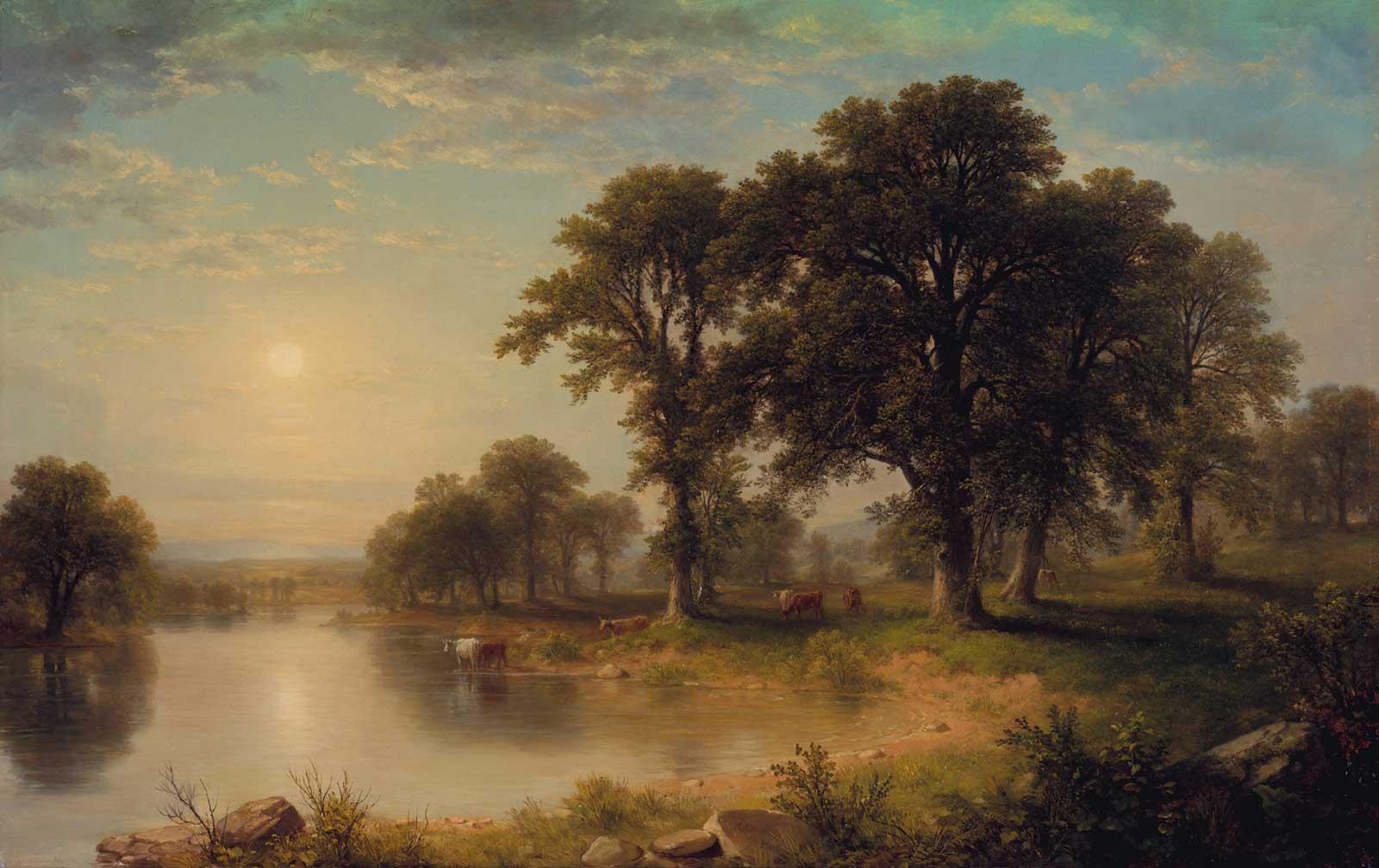
Asher B. Durand, Summer Afternoon, 1865.
Sun, sand, sky, water, and women predominate as subject matter when artists throughout history turned their attention to communicating the light, languid heat, and soft sensuality of long summer days. As we are now in the midst of these days, we can look to these artists to remind us what the season is for— picnics in the park with family and friends, busy beaches, and the suspension of time between the promise of spring and the fulfilling harvest of fall.
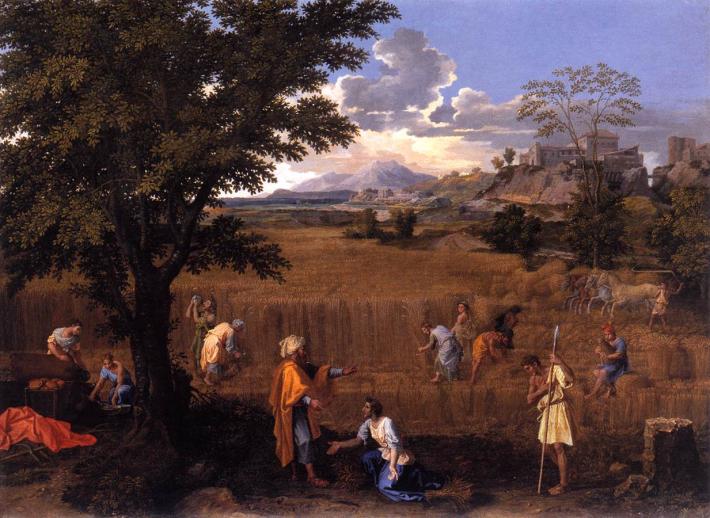
Depicting the four seasons is a subject matter many artists have turned to, including Nicholas Poussin (1594–1665), a popular French painter of the classical Baroque style. Late summer was often a time of early harvest, as seen in the painting Summer or Ruth and Boaz. Here, Poussin favors line and landscape, combining the biblical love story of Ruth and Boaz with the fecundity of a wheat harvest, the drinking of wine, and making bread.
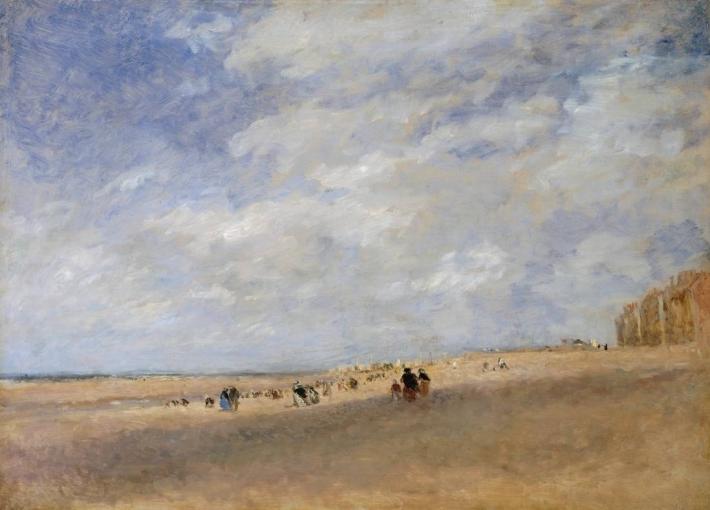
English landscape painter David Cox (1783–1859) achieved fame as a watercolorist before he transitioned to oil painting near the end of his career, completing over 300 works in that medium. In Rhyl Sands (1854) the tiny figures seem no more than flotsam and jetsam scattered on a vast beach under a great expanse of sky. The gestural quality of this painting makes it easy to see why Cox is considered an early precursor to Impressionism.
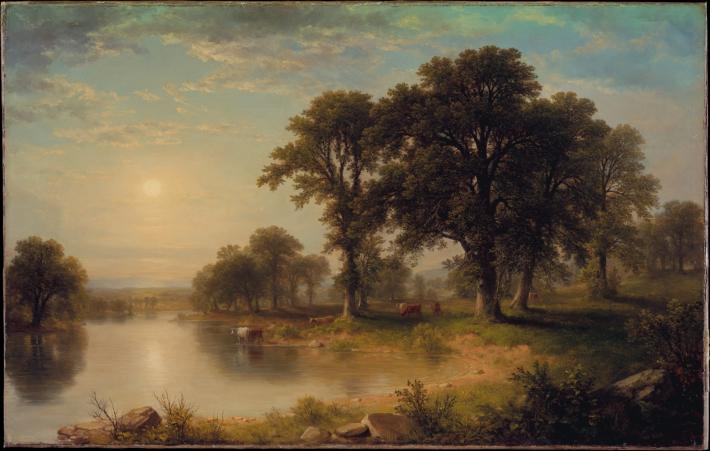
The heat of a late afternoon summer sun radiates from this landscape by Asher B. Durand (1796–1886), who was trained as an engraver before he became a founding member of the Hudson River School. A proponent of painting en plein air, Durand's mythic, pastoral landscapes, infused with light and air, transport us into the wild heart of nature.

A casual male eroticism permeates this scene of young men having a leisurely day swimming on a riverbank. It is thought that this painting may have influenced American artist Thomas Eakins’ work, The Swimming Hole (1885). Frédéric Bazille (1841–1870) was a French artist and friend of Impressionists Claude Monet, Alfred Sisley, and Édouard Manet. He died at the age of twenty-eight from wounds sustained on the battlefield during the Franco-Prussian War.
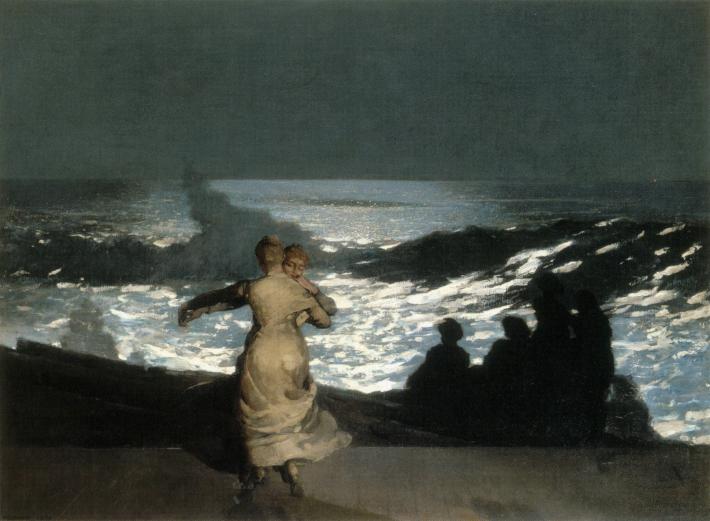
The preeminent American artist Winslow Homer (1821–1896) is best known for his windswept portrayals of people on land and at sea, which often take on an underlying ominous tone, as in Summer Night. Turbulence and mystery enshroud these moonlit female figures. They seem to be dancing, with one partner peering over the other's shoulder, perhaps just out of view of a group of shadowy figures on the right.
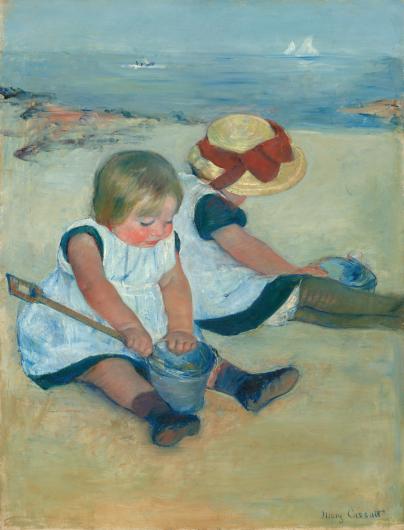
Born in what is now Pittsburgh, Pennsylvania, the beloved American Impressionist Mary Cassatt (1844–1926) spent most of her adult life painting in France. Women in scenes of domestic life were her primary subjects, with emphasis on the intimacy between mothers and their children. In this charming early work, two little girls-- possibly twins-- are dressed in identical pinafores as they play with their buckets in the sand.
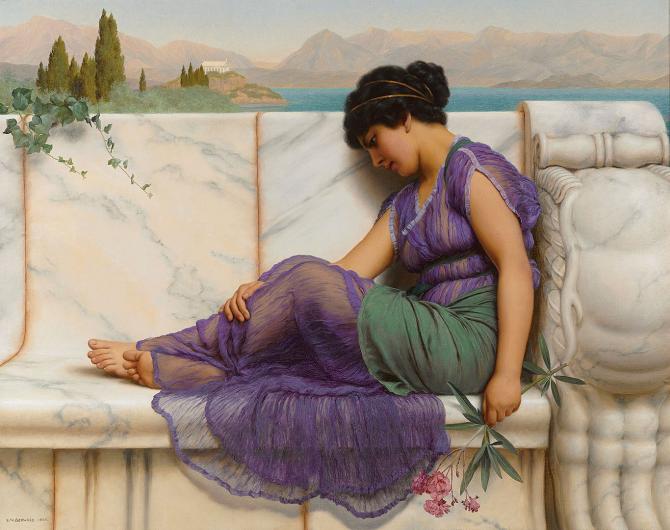
In the paintings of John William Godward (1861–1922), beautiful women in revealing, softly-draped fabric are self-consciously placed in melodramatic poses against elements of classical Roman architecture, paying homage to the influence of Dutch painter Lawrence Alma-Tadema.
Painting in a Neo-Classicist style, the intense color and sensuality of Godward’s female subjects, occasionally depicted in full frontal nudity, align him mistakenly with the Pre-Raphaelite Brotherhood. His paintings fell out of style with the onset of modernism, and disowned by his family for his decision to become an artist, he ended his life at age sixty-one.
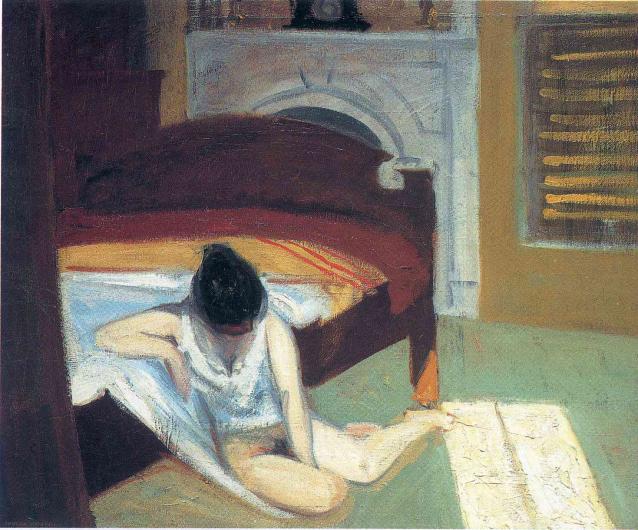
The quiet, nearly airless interiors of Edward Hopper's (1882–1967) paintings reflect his own shyness and reclusive life. Were it not for the clue in the title, it would be difficult to guess the time of year depicted in this early work. It is the young woman’s partial nakedness, a rare subject for Hopper, situated near a beam of sunlight that hints at summertime's warmth.
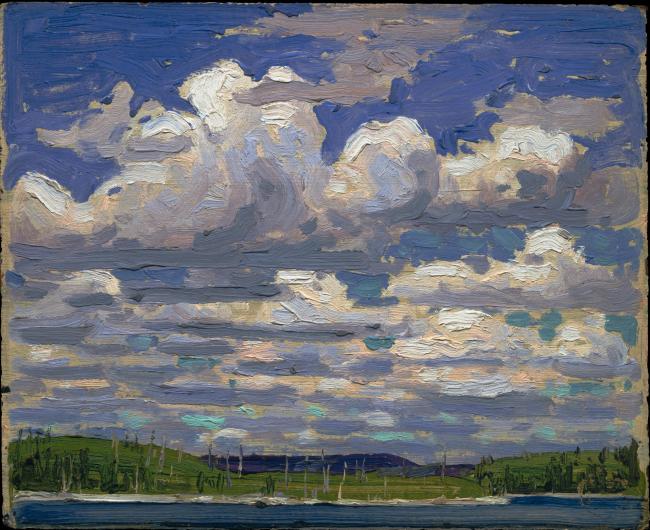
The air appears almost breathable in this post-Impressionist painting of windblown clouds by the self-taught Canadian artist Tom Thomson (1877–1917). He was an enthusiastic outdoorsman and his work reflected the trees, skies, lakes, and rivers of rural Ontario where he spent most of his time. His accidental death by drowning at the age of thirty-nine sparked nefarious rumors of his possible murder or suicide.
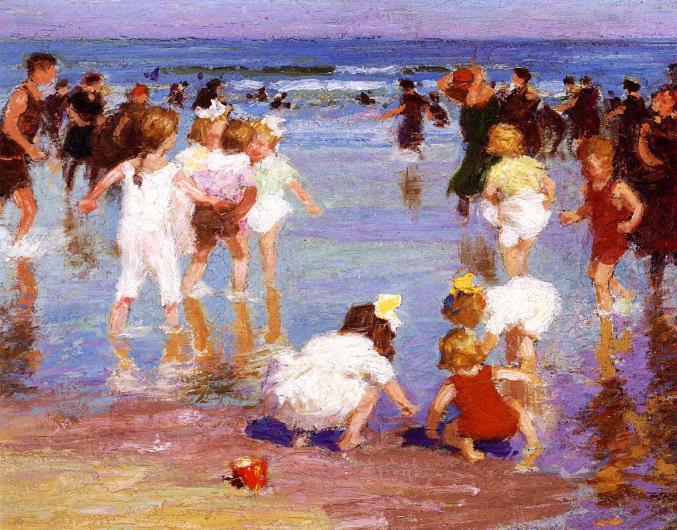
Ohio-born American Impressionist Edward H. Potthast (1857–1927) studied lithography before he became the quintessential painter of people at leisure, usually seen on the sun-saturated beaches of New York and New England. In this painting, groups of children crowding along the water’s edge sparkle like little jewels in the summer sun, reminders of the freedom of youth in happier times.
Cynthia Close
Cynthia Close holds a MFA from Boston University, was an instructor in drawing and painting, Dean of Admissions at The Art Institute of Boston, founder of ARTWORKS Consulting, and former executive director/president of Documentary Educational Resources, a film company. She was the inaugural art editor for the literary and art journal Mud Season Review. She now writes about art and culture for several publications.























